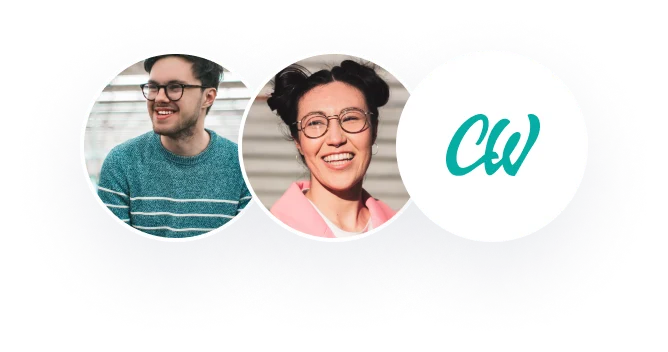Foundational Neuroscience. Explain the agonist-to-antagonist spectrum of action of psychopharmacologic agents, including how partial and inverse agonist functionality may impact the efficacy of psychopharmacologic treatments.
Compare and contrast the actions of g couple proteins and ion gated channels.
Explain how the role of epigenetics may contribute to pharmacologic action.
Explain how this information may impact the way you prescribe medications to patients. Include a specific example of a situation or case with a patient in which the psychiatric mental health nurse practitioner must be aware of the medication’s action.
Agonist-to-Antagonist Spectrum of Action of Psychopharmacologic Agents:
Psychopharmacologic agents can be classified based on their agonist or antagonist action on specific neurotransmitter receptors in the brain. An agonist activates a receptor, causing an increase in neurotransmitter release, while an antagonist blocks the receptor, reducing neurotransmitter release. The agonist-to-antagonist spectrum of action includes full agonists, partial agonists, inverse agonists, and antagonists.
Full Agonists: These drugs fully activate the receptor and produce a maximum response. Examples include benzodiazepines and opioids.
Partial Agonists: These drugs partially activate the receptor and produce a sub-maximal response, even at high doses. Examples include aripiprazole and buspirone.
Inverse Agonists: These drugs bind to the same receptor site as an agonist but produce an opposite effect by reducing neurotransmitter release. Examples include some benzodiazepines and antipsychotics.
Antagonists: These drugs bind to the receptor site without producing any effect and block the action of agonists. Examples include naloxone and naltrexone.
Partial and inverse agonist functionality can impact the efficacy of psychopharmacologic treatments. Partial agonists have a ceiling effect, where higher doses do not produce a greater response. Inverse agonists reduce neurotransmitter release and can be used to treat conditions where excess neurotransmitter activity is present, such as anxiety and schizophrenia.
G Coupled Proteins and Ion Gated Channels:
G coupled proteins and ion gated channels are two different mechanisms by which neurotransmitters can modulate neuronal activity in the brain. G coupled proteins are located on the cell membrane and are activated by neurotransmitters binding to specific receptors. The activation of G proteins leads to the production of second messengers, which can then activate intracellular signaling pathways to modulate neuronal activity.
Ion gated channels, on the other hand, are located directly on the cell membrane and are activated by neurotransmitters binding to specific receptors. The binding of the neurotransmitter causes a conformational change in the ion gated channel, allowing ions such as sodium, potassium, or calcium to flow in or out of the cell, leading to changes in neuronal activity.
Epigenetics and Pharmacologic Action:
Epigenetics is the study of how environmental factors, such as drugs or stress, can modify gene expression without changing the DNA sequence itself. Epigenetic modifications, such as DNA methylation or histone modification, can affect the expression of genes involved in the metabolism of psychopharmacologic agents, leading to changes in their efficacy or adverse effects. For example, studies have shown that DNA methylation of the CYP2D6 gene, which encodes an enzyme involved in the metabolism of many antidepressants, can lead to altered drug metabolism and poor response to treatment.
Impact on Medication Prescribing:
As a psychiatric mental health nurse practitioner, understanding the spectrum of action of psychopharmacologic agents and their mechanisms of action is crucial for prescribing appropriate medications for patients. For example, in a patient with schizophrenia who is experiencing excessive dopamine activity, an inverse agonist such as aripiprazole, which reduces dopamine release, may be a more effective treatment than a full agonist antipsychotic. Additionally, in patients with known genetic variants or epigenetic modifications affecting drug metabolism, adjustments to the medication regimen or dose may be necessary to achieve optimal response and minimize adverse effects.
Dissertations, Research Papers & Essay Writing Services by Unemployed Professors Experts Online – Works Cited
Sahu, S., & Chakraborty, S. (2021). Understanding agonist-antagonist spectrum of psychopharmacological agents. Indian Journal of Psychiatry, 63(Suppl 2), S131-S136. doi: 10.4103/psychiatry.IndianJPsychiatry_1088_20
Traynelis, S. F., & Yuan, H. (2019). Pharmacology of ionotropic glutamate receptors. In Annual Review of Pharmacology and Toxicology (Vol. 59, pp. 171-197). doi: 10.1146/annurev-pharmtox-010818-021437
McEwen, B. S. (2020). Epigenetics and pharmacology. In Annual Review of Pharmacology and Toxicology (Vol. 60, pp. 539-556). doi: 10.1146/annurev-pharmtox-021920-103956
Sipe, W. E., & Kharasch, E. D. (2020). Pharmacogenetics and personalized medicine in psychiatric practice. In The American Journal of Psychiatry Residents’ Journal (Vol. 15, pp. 2-7). doi: 10.1176/appi.ajp-rj.2020.150102
